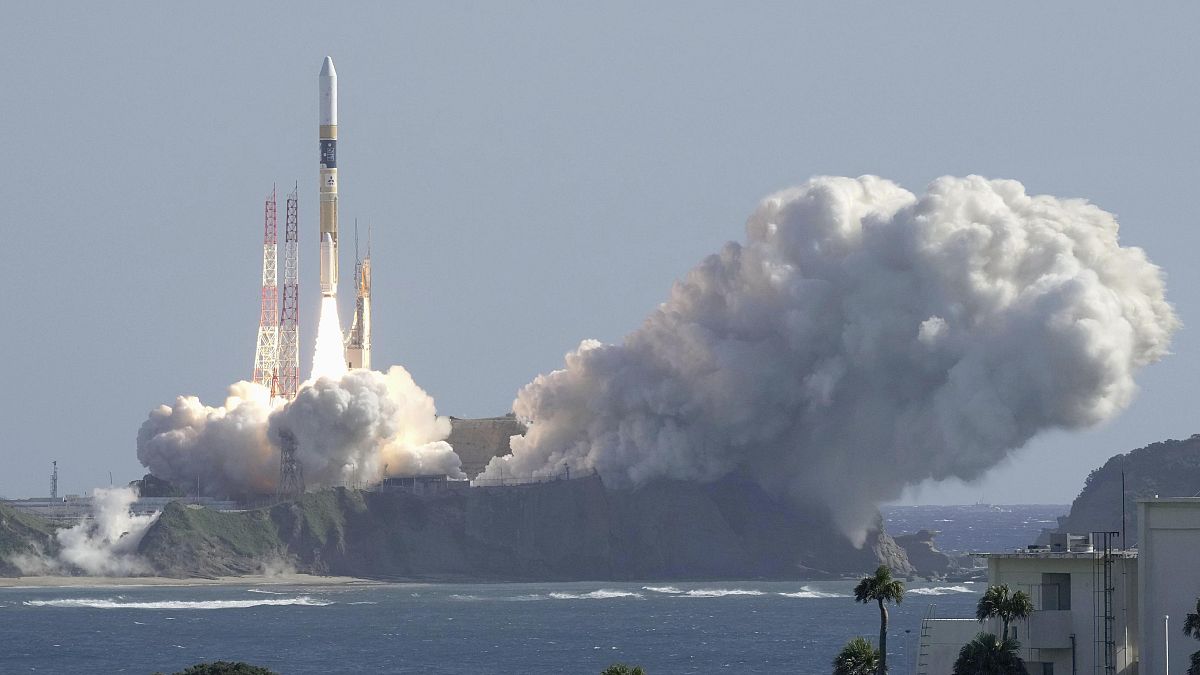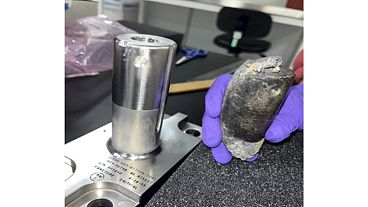Japan has successfully launched a rocket carrying its XRISM satellite and a lunar lander just weeks after India's historic lunar landing.
After three scrubbed launch attempts, Japan’s mission to launch a lunar lander and a space telescope took off successfully on Thursday.
"We have a liftoff," a commentator at the Japanese Space Agency (JAXA) said as the HII-A rocket was launched from Tanegashima Space Centre in southwestern Japan.
Thirteen minutes after the launch, a satellite called the X-Ray Imaging and Spectroscopy Mission, or XRISM was put into orbit around Earth.
It is going to measure the speed and composition of the materials lying between galaxies.
Data collected will help in the study of how celestial objects were formed, and hopefully can lead to solving the mystery of how the universe was created, JAXA said.
In cooperation with NASA, JAXA will look at the strength of light at different wavelengths, the temperature of things in space and their shapes and brightness.
David Alexander, director of the Rice Space Institute at Rice University in the US, believes the mission is significant for delivering insight into the properties of hot plasma, or the superheated matter that makes up much of the universe.
Shedding light on blackholes
Plasmas have the potential to be used in various ways, including to heal wounds, make computer chips and clean the environment.
"Understanding the distribution of this hot plasma in space and time, as well as its dynamical motion, will shed light on diverse phenomena such as black holes, the evolution of chemical elements in the universe and the formation of galactic clusters," Alexander said.
Also aboard the rocket is the Smart Lander for Investigating Moon, or SLIM, a lightweight lunar lander. SLIM will go into lunar orbit in three or four months, and is expected to attempt a landing early next year, according to the Japanese space agency.
The lander successfully separated from the rocket about 45 minutes after the launch and proceeded on its proper track to eventually land on the Moon. JAXA workers applauded and bowed with each other from their observation facility.
JAXA is developing "pinpoint landing technology" to prepare for future lunar probes and landing on other planets. While landings now tend to be off by about 10 km or more, SLIM is designed to be more precise, aiming for within about 100 metres of the intended target, JAXA official Shinichiro Sakai told reporters ahead of the launch. That allows the box-shaped gadgetry to find a safer place to land.
The move comes at a time when several countries are planning missions to the Moon. Only four nations have successfully landed on the Moon - the US, Russia, China and recently India.
New space race
Last month, India became the first nation to land a spacecraft near the Moon's south pole. That came just days after Russia failed in its attempt to return to the Moon for the first time in nearly a half-century.
Japanese private company ispace crashed a lander while trying to land on the Moon in April.
Japan’s space programme has been marred by recent failures. In February, the H3 rocket launch was aborted for a glitch. Liftoff occurred a month later, but the rocket had to be destroyed after its second stage failed to ignite properly.
Japan has started recruiting astronaut candidates for the first time in 13 years, making clear its ambitions to send a Japanese person to the Moon.
The last NASA human mission to the Moon was in 1972. Since then, the focus on sending humans to the Moon appeared to wane, with missions being relegated to robots.



